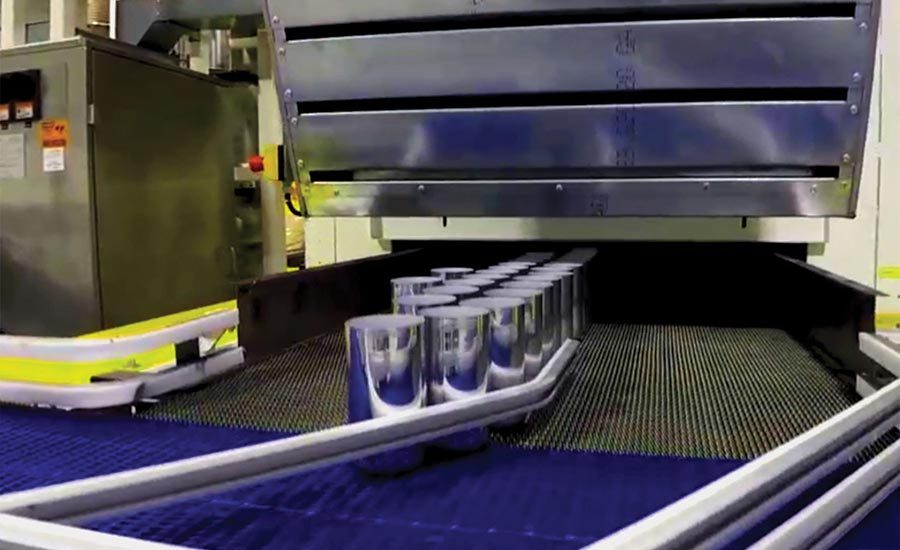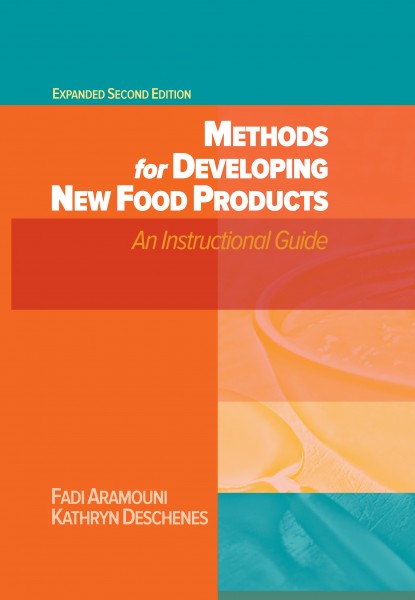Interior epoxy can coatings with Bisphenol-A (BPA) have certainly gotten a bad reputation. While known, safe alternative can coatings do exist, they often don’t use the same supporting equipment or technologies as coatings with BPA, so a coating change could be expensive.
Dow Coating Materials, a business unit of The Dow Chemical Company, has developed a novel technology that can be used as a drop-in alternative to incumbent epoxy-based metal can coatings.
“CANVERA Polyolefin Dispersions are a market disruptor that improves the safety profile and sustainability for coatings used in the food and beverage industry,” says Jonathan Mason, associate research director, Dow Coating Materials. “They allow us to use the same trusted chemistry on which we’ve relied for decades in flexible and rigid food packaging in the thin-film coatings that line metal cans. Now, we can achieve a safety profile that regulators and consumers alike prefer, while keeping canned foods and beverages flavorful and fresh.”
CANVERA Dispersions offer food and beverage brand owners, can makers and coatings formulators a long-term metal can packaging solution that addresses growing consumer interest in can coatings that exclude epoxy, BPA and other materials of concern to customers.
The technology recently received two R&D 100 Awards, which honor products and technologies making a significant impact within research and development. The technology also won a 2016 ICIS Innovation Award, which rewards innovative and sustainability-minded entities in the chemical industry.
CANVERA Dispersions are enabled through Dow BLUEWAVE technology, a proprietary process developed by the Dow Core R&D Group. This process mechanically disperses polymers into water to form dispersions with performance attributes typically reserved for solvent-based or melted polymer systems.
FE caught up with Jonathan Mason to fill in some details on the new coating technology.
FE: Glass, though prone to chips and breaks, doesn’t need linings. What about cans?
Jonathan Mason: Metal packaging offers a lot of benefits when it comes to shelf life, recyclability, low energy intensity and locking in food flavor and freshness. While these benefits are often overshadowed by the epoxy/BPA discussions, the coating in a metal can is important for protecting both the can and the food. First, protecting the can from the contents of the container prevents acidic beverages or foods from attacking the metal. The coating is also there to protect the food from the container, because you don’t want aluminum or metal contaminating the food. CANVERA allows us to bring the favorable properties that consumers have enjoyed in the flexible and rigid plastic packaging industry to the metal packaging industry, without the materials of concern to consumers.
FE: How long has Dow been working on a replacement to BPA linings?
Mason: Seven years ago, Dow began researching alternatives to BPA. Dow has been a supplier in the metal packaging industry for more than 40 years, and we want to ensure we provide coatings that meet all expectations in terms of performance. In researching alternatives to epoxy, we developed CANVERA, a polyolefin dispersion aimed at providing a coating that’s not just free of epoxy or BPA, but free of other known materials of concern to consumers, regulators and brand owners.
FE: How do you create an emulsion that can be applied to a can interior?
Mason: To develop CANVERA, we used a mechanical dispersion process known as BLUEWAVE. Starting with polyolefin pellets, we melted them, extruded them in a twin-screw extruder and produced a high-internal phase emulsion, which locks in the particle size needed for such thin coatings. We then diluted it with water to create the final product, a stable polyolefin in water—CANVERA dispersion, the polyolefin dispersion with small, approximately one-micron sized particles. This dispersion provides a waterborne system that formulators can use to develop a coating to apply to the metal container.
FE: What are the advantages of a water-based emulsion system vs. lacquer or some other technology?
Mason: Being waterborne provides a more attractive environmental profile compared to solvent-borne alternatives, a feature recognized with our recent Business Intelligence Group Award in 2016 for Best Sustainable Product of the Year. The second advantage is the ability to provide a polyolefin material in water form, compared to the conventional melt-processes used for plastic films and containers. This enables “drop-in” to [an] existing can coating infrastructure that requires a liquid-applied coating. Finally, by using high molecular weight polyolefins, we can minimize migration of compounds from the coating into the food. This compares favorably to all other coating chemistries that rely on the use of low molecular weight pre-polymers, which are later cross-linked during the can baking process.
FE: After the water-based emulsion is spray applied to the can, what’s the next step?
Mason: Coatings made from CANVERA polyolefin dispersions form via a melting mechanism during the can manufacturing bake step, so we melt those tiny plastic particles to form a thin plastic layer inside the can. These coatings help preserve flavor and offer a strong safety profile based on consumer needs.
FE: So, this new coating technology requires no changes to the coating process?
Mason: CANVERA polyolefin dispersions are a drop-in replacement for the epoxy technology that’s used today. The technology has excellent run ability, and that’s very important to can makers who run at high rates where efficiency is key. CANVERA polyolefin dispersions bring value to each place in the value chain. Dow’s customers, the formulators, create a coating that they then sell to the can makers who work with progressive food and beverage brand owners.
FE: Is there any downtime in making the change from epoxy to CANVERA?
Mason: The can maker just has to flush the old epoxy from the pipes and the other handling equipment to enable the conversion to coating systems based on the CANVERA products. An added benefit, in some cases, is the ability to operate the baking ovens at lower temperatures compared to epoxy systems.
FE: What kind of lifetime do you see this technology having?
Mason: The industry is really looking for a solution that will be sustainable for the next 40+ years, has good consumer acceptance and performance for the package and meets the requirements of consumers, brand owners, can makers and formulators.
FE: Are there applications for this technology beyond metal packaging?
Mason: Yes. We have another project related to creating a food-contact barrier in paper coatings, and we are exploring several other industrial applications that can benefit from polyolefins in a liquid-applied system.
FE: Do you have food and beverage processors testing CANVERA at this time? Is the technology already being used in production?
Mason: We have partnered throughout the value chain to conduct extensive trials of the technology during the last four years. In 2016, consumers in North America and Europe first began to purchase food and beverage products in cans made using CANVERA technology.
FE: What Dow groups were involved in this effort?
Mason: The CANVERA polyolefin technology leverages the strength of Dow. Collaboration across our polyolefin franchise, core R&D effort and high-throughput capabilities, world-class regulatory experts and Dow Coating Materials over the past seven years led to the CANVERA innovation.
FE: Is the product available in production quantities to formulators and can makers?
Mason: We use existing BLUEWAVE product manufacturing in North America and Europe to supply customers. We have also commenced building a new facility in Europe to meet growing demand.






